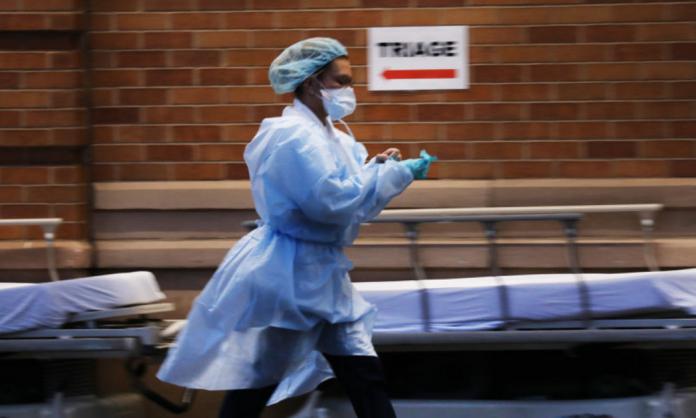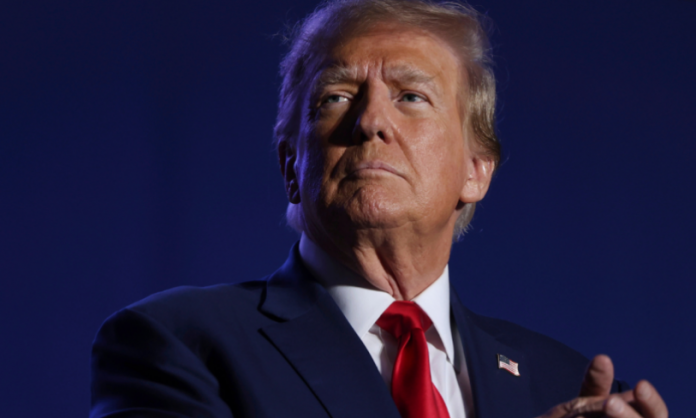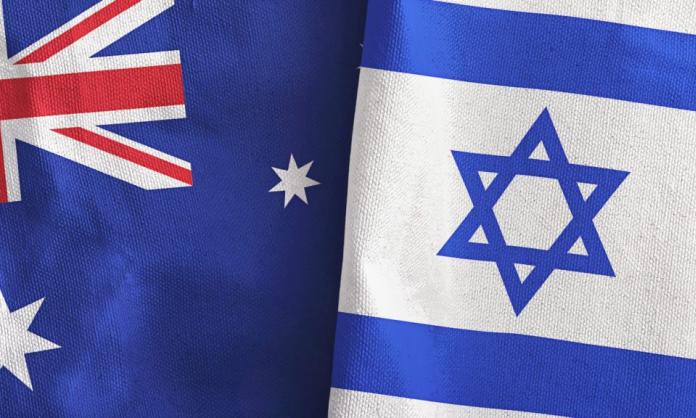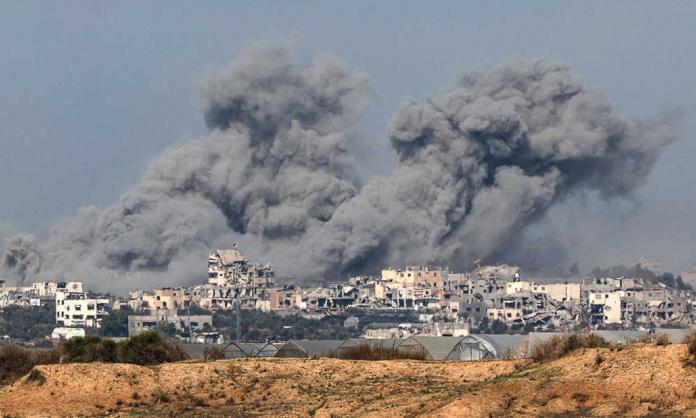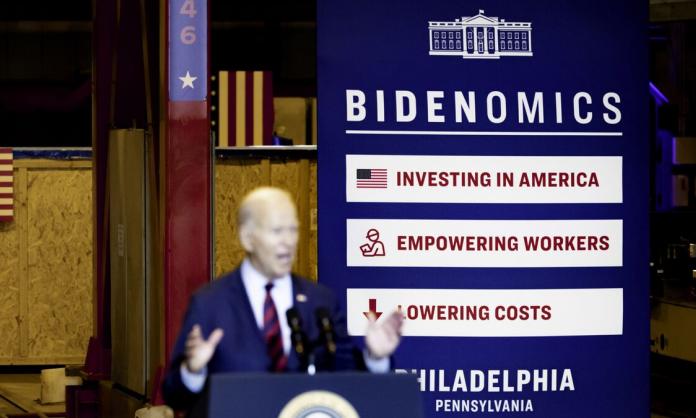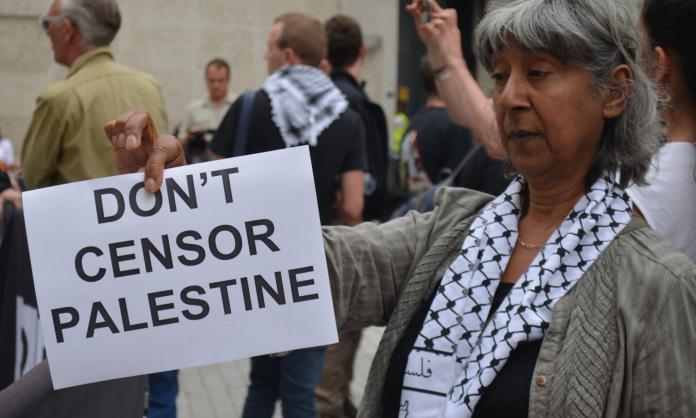“In my hospital, the policy was, if you were exposed, you still came to work unless you were symptomatic ... it was considered optional to even get tested.” Sean Petty is an emergency room nurse in a public hospital in New York, where more than 122,000 people have been infected and more than 4,500 died. Speaking via Zoom, he relates the unnerving experience of walking down deserted Manhattan streets: “The only thing moving was a police car blaring a message on repeat: ‘Please stay six feet apart at all times’”.
The daily symphony composed by millions of people going about their lives has been put on hold, indefinitely. But in the hospitals, chaos reigns. The health care system is collapsing. In Sean’s emergency room, patients are “held for hours, waiting for a bed”. Even those with confirmed cases wait on stretchers crammed into every corridor and waiting area, sometimes isolated from others, but in many cases not.
Terrible risks have been forced on patients and staff at every stage of the treatment process because of staff and equipment shortages. Sean lauds the creativity and determination of his co-workers to find solutions to impossible problems. But the forced departure from standard practices is putting lives in danger. “Every safety measure that we’ve been told is crucial to keep ourselves and our patients safe is being rearranged on the fly”, he says. “We just lost a nurse on Saturday morning, the second who has died of COVID-19 in New York.”
Working conditions for frontline health care staff have become a national scandal in the US, as images of nurses wearing garbage bags for protection circulate widely. Sean presents these appalling stories with the bluntness typical of those used to working in dangerous situations: “There’s a fatalism involved for nurses, we just know that we don’t have enough protection, that [the patients] are going to get worse, and we’re going to get worse. It’s a pretty harrowing situation to face and deal with”, he says.
Prisoners in Rikers Island jail, in the East River between the Bronx and Queens, are also facing a health catastrophe. Chief physician Ross McDonald told the Guardian this week that cases of COVID-19 have increased from one to 200 in just 12 days. The penitentiary holds up to 10,000 inmates, most of whom are pre-trial defendants. The Intercept reports that they are being asked to dig graves for $6 dollars an hour. “Most people in Rikers haven’t even been convicted; they’re there because they’re poor and can’t afford bail”, Sean says. “There are thousands of these people, crowded together, given a death sentence for crimes they may or may not have committed ... and that goes for all the major penitentiaries in upstate New York, too.”
----------
Many have noted how the Trump administration’s atrocious policies have exacerbated the crisis. The president’s single-minded focus on maintaining economic growth and profits for US corporations, is the most dramatic instance of a global trend. His lethargy and indifference guarantee that tens of thousands will die needlessly. His call to restart the economy after Easter was a call to sacrifice workers at the altar of corporate greed.
Initially, federal policies were received with the weary hostility you would expect from a country ruled by a joker for nearly four years. Sean refers to this desensitisation as “alarm fatigue”. However, because the stakes are so high, “and because Trump is brazenly posing the health of the market against the deaths of hundreds of thousands”, alarm bells are ringing for more and more people across the country. That may be true even among Trump’s loyal base. “There’s a real contradiction bubbling up between the needs of economic growth and profits and the health care needs of this crisis, and Trump is the worst person to navigate that delicate situation”, Sean says.
Faced with an incompetent federal administration led by a reckless, self-centred billionaire, many have praised the relatively statesmanlike leadership of New York governor Andrew Cuomo. The mainstream media seem keen to establish him and mayor Bill Di Blasio as potential leaders of the Democratic Party. Undeniably, Cuomo has cut a strong and decisive figure, demanding a more coherent plan from the Trump administration, including calling for federal control over the procurement of essential medical goods. He has called on the federal government to send military engineers to help New York build emergency hospital capacity.
However, Sean points out that Cuomo and the broader New York political establishment are also to blame for the crisis. He rails against a “massive drawing down of hospital bed capacity”, motivated by capitalist cost-cutting and justified through theories of just-in-time hospital management, which consider empty hospital beds an intolerable inefficiency in a world ruled by supply and demand. “Since 2000 there’s been a decrease in beds from 73,000 to 53,000 [in New York], a product of specific funding decisions by Cuomo and others”, he says. For example, a 2015 study, “Hospital closures: the sociospatial restructuring of labor and health care”, cites debt and downsizing programs as key factors in the closure of more than 20 hospitals since 2003 in New York City. The results have been devastating, Sean says:
“Queens was basically a hospital desert going into this crisis, so it’s no coincidence that Elmhurst hospital in Queens has now been flooded with patients ... But every hospital has been facing a staffing crunch ... we lost 1,000 nurses in our hospital alone. That’s just at the level of capacity, not touching on people’s access to care, including uninsured people, the homeless population, the undocumented, people in prisons ... All of those massive problems of health care inequality and social inequality that exist in this city of billionaires ... then get exploded when something like the coronavirus hits.”
There is also a direct link between the dire local situation and federal government policy under both Republican and Democratic presidents. “Obama’s Affordable Care Act facilitated these cuts”, Sean explains. “It reduced spending on Medicare, compelled the restructuring of health care, and disincentivised hospital funding. Mostly, people consider [Obamacare] as about expanding health care access, but what it mostly produced was an attempt at cost-containment ... You can find quotes from architects of the bill, including health industry CEO’s saying that’s what they were trying to do.”
White House archives support his claim. Obama’s Council of Economic Advisers released a report in June 2009 titled The economic case for health care reform. Every one of its findings is concerned not with health care, but with economic growth and fiscal responsibility. Other reports have a similar focus. Obama was the slickest salesperson the US ruling class has had for decades, and he sold Americans a dud.
----------
It is easy to think that resistance would be next to impossible on the front lines of a pandemic. There are clearly difficulties, as Sean explains: “You are not being given the time and space to think about anything except taking the patient in front of you”. But as the risks keep mounting, resistance becomes inevitable.
The first sign of mismanagement was the shortage of personal protective equipment. “The big struggle right now is about N95 masks, and how our country just can’t supply this crucial item”, Sean says. The masks are crucial for efforts to stop the spread of the disease. But early in the pandemic, when faced with a severe shortage, the US Centers for Disease Control and Prevention (CDC) decided not to do the obvious thing – urgently source more masks – but to lower its guidelines. “They used to say COVID-19 was an airborne disease that necessitated use of N95 masks”, Sean says. “That was a science-based assessment. Then they lowered it because of the shortage, to let hospitals and local governments off the hook.” Months into the crisis, there is a crisis:
“[There’s a] severe rationing of supplies, these N95 masks we’re supposed to have for every time we walk into a room, now we just use basic surgical masks except for specific procedures. At first, we got one [N95 mask] per day, now we get one per week, and you have to reuse it until it’s damaged in some way, and you actually have to prove that. People are coming up with ways of cleaning the masks themselves, which actually makes them far less effective because they’re designed to be electrostatically charged.”
This callous disregard for workers’ lives has resulted in growing discontent. As a union rep, Sean was brought constant complaints about the lack of supply and the unsafe workplace. He remembers seeing reports of nurses in South Korea with plastic suits, plastic face shields and built-in respirators. “Then I’m thinking about my co-workers who can’t even get a gown, or gloves.” So he did what every socialist does best, and organised to fight back: “Myself and a couple of other union activists have been talking about ways to do more visible action for the last week or so, challenged by the need to reinforce the crucial message about the need for social distancing”. When he and his co-worker decided on a public protest, lots of people in his union and people who were leaders in other hospitals were hesitant: “Would people be afraid to come out, would politicians freak out on us?” That all changed when the first nurse in Sean’s hospital died of COVID-19. “On the same day, the hospital changed their policy from one mask a day, to one a week”, Sean says.
“At that point, we decided the time was right. We hijacked one of these employer-employee co-management meetings. They were talking about how we lack [protective gear]. We argued that we needed to stop talking and actually do something that reached the ears of the government, the mayor, the CDC, and hopefully the Trump administration. We thought our action on the hospital grounds was just going to the first step, but we were blown away by the response. It was covered in every major news station, including NBC and CBS, plus AAP syndicated it into papers across the country.”
The protest had three demands. First, that the CDC roll back its decision to downgrade the need for N95 masks. Second, that the federal government commandeer factories across the US to rapidly expand the production of essential medical goods. Finally, that health officials and hospital managers speak the truth about the shortages, adding pressure on the government to act. When I ask about whether they were calling for hazard pay, counselling or any other extra measures to look after staff in this dangerous time, Sean demurred: “Most people are in such crisis mode, we just need masks that can prevent us from dying, we need staffing that can prevent patients from dying.”
The nurses’ union backed their protest, but Sean says this kind of action is not the usual approach of unions in New York. To the extent that the city has avoided the extreme cuts to public services and living standards experienced elsewhere, it’s been mostly through backdoor political deals and relationship-building with the establishment – “and in NYC, that’s the Democratic Party”. Sean outlines a situation that would be painfully familiar to Australian readers:
“Unless [unions] are facing specific existential crises to their members and their organisations, they’re very reticent to challenge the dominant message coming out of government. The strategy for unions in this city has been, you do most of your organising in an election, to elect your boss – the mayor or governor – and that determines how well you do when negotiating your contract.”
According to Sean, a partial exception to this general picture is the New York State Nurses Association. He was elected to the board of directors in 2011, after a rank-and-file ticket won leadership of the union. In an immense health crisis overlaid by an unprecedented economic collapse, there is every chance that a more militant approach to the class struggle might become more popular.




